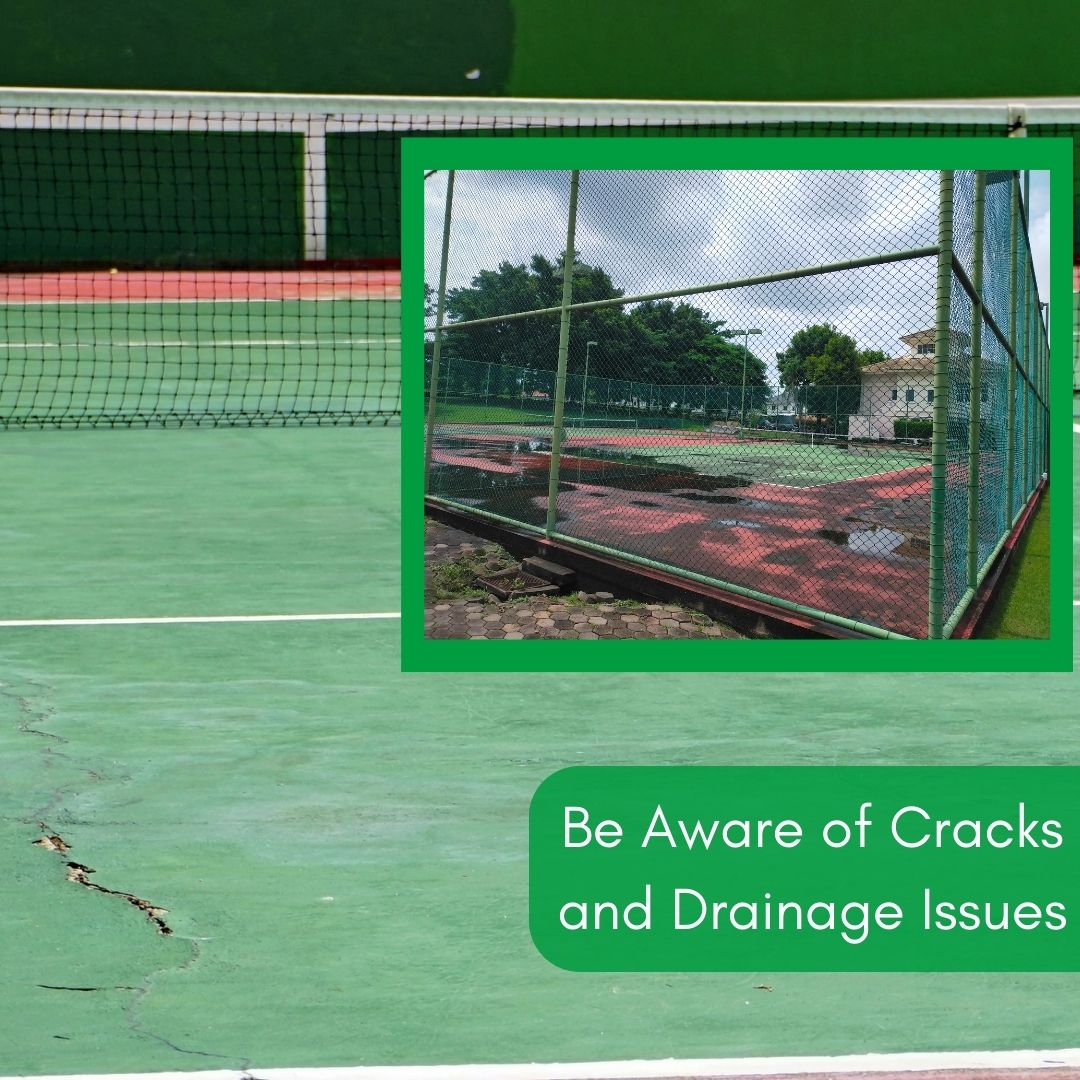
In this series's first two installments, we discussed what to consider when adding pickleball courts and the installation options.
We conclude this series by addressing how to protect your pickleball court investment with inspections and maintenance. Pickleball court maintenance helps to increase the playing area’s lifespan and maintain its appearance. Also, a well-maintained pickleball court is safer and more inviting for the public.
In this article, we’ll discuss how to maintain a pickleball court and outline how to prepare pickleball courts for the winter if you live in northern climates.
Surface

A surfaced court can last up to 5 - 10 years if properly built and maintained. Here’s how to help make the surface last.
Remove Dirt & Debris
Regularly inspect court surfaces and remove any dirt and debris. Clearing the surface helps to minimize tripping hazards and reduce the potential for staining. Also, organic material on the court causes excess underfoot friction, which prematurely wears down the surface.
Remove debris with a leaf blower or broom. Avoid pressure washing the court unless you plan to resurface it soon.
Neglected or heavily shaded courts may develop mold or mildew problems. This can be addressed with a solution of 4 parts water, 1 part household bleach, and a small amount of detergent. Check with the surfacing contractor or spot-test a small area before using this solution on the entire stained area.
Inspect for Drainage Issues
After heavy rain, report any pooling water. If possible, measure any puddles--or “birdbaths”-on the pickleball court’s surface an hour after it rains. The surface should be patched if the puddles are deeper than 1/16” of an inch.
If you don’t have a ruler, put an upside-down nickel in the middle of a puddle. If water covers the top of Jefferson’s head, it may be time to patch.
Remove puddles with a water broom to avoid extra debris accumulation and premature surface breakdown.
Monitor Cracks and Other Surface Problems
Some cracks are just a sign of normal wear and tear. Others may hint at more serious problems.
Record any cracks in the court’s surface, including:
- Location of cracks
- Size (both length and width)
- Any noticeable changes
If repairing cracks, only use materials specifically designed for use on tennis or pickleball courts. Or contact your court contractors to determine the correct products or to repair the damage.
Also, check for any bubbles or blisters on the court surface. Sub-surface water putting pressure under the coatings may cause bubbles to form.
Lines
While, technically, lines are part of the pickleball court’s surface, they deserve special attention. If you added pickleball lines to tennis courts, you want to ensure the different lines are visible and distinguishable.
Check for cracks, fading, or stains on the pickleball court lines. Clean or repaint the lines according to the paint manufacturer’s instructions.
Nets and Posts
Clean the headband of the net monthly with warm water and detergent. Avoid using products with bleach. Also, clean the posts and sleeves once or twice a year to help increase their usable lifespan.
Check the posts for signs of mold, mildew, water damage, rust, or corrosion. Also, check the condition of the net’s center straps, lacing cord, steel cables, and dowels. Replace anything that appears damaged or worn.
Other Nearby Systems
Set up routine inspections and maintenance of the other amenities near the pickleball courts.
Systems to include in your inspections:
- Fencing
- Windscreens
- Lighting Systems
- Bleachers/Seating
- Storage containers/areas
- Restrooms/Portable toilets
Keep records of all inspections to stay aware of any changes that need attention. Inspection records also may help with risk management and warranty issues if they arise.
Fall and Winter Pickleball Court Maintenance
Keep the court’s surface clear of dirt and debris as it gets closer to winter. The wind blowing and leaves falling may seem like a losing battle. It’s a battle worth fighting, though.
Those leaves, twigs, and grass lying on the court all winter could lead to stains and other surface damage. After all, it’s much easier to use a leaf blower on a dirty surface than scrub away stains in the spring.
Also, conduct a thorough inspection of the entire pickleball court area. If equipment is worn or damaged, don’t wait to create work orders and order replacement parts. Get everything you need so repairs can be completed in the off-season.
If you live in a region where outdoor courts aren’t used in the winter, consider removing, labeling, and storing nets and windscreens in a safe, dry area. If you intend to keep the nets up, you may want to lower them a little so they are under less pressure.
Finally, review the season’s maintenance records for the pickleball court. If the court required excessive maintenance, it might indicate a more serious problem that needs to be addressed.
